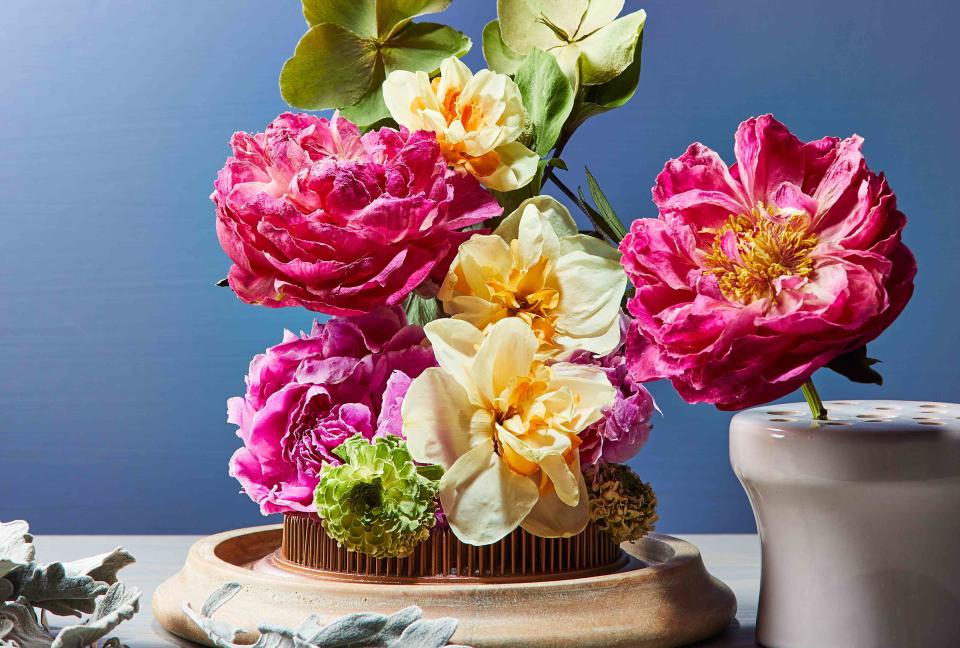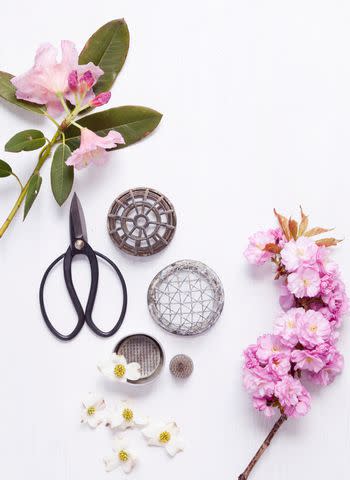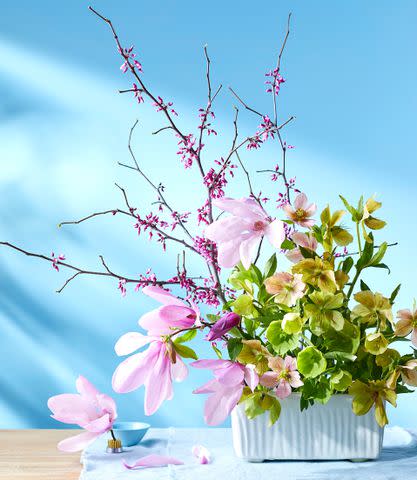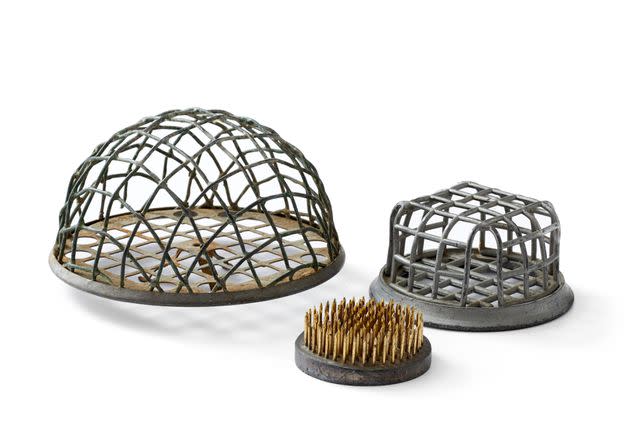What's a Flower Frog? How to Use This Handy Floral Helper
Chances are you've come across these functional garden gadgets before. Learn how to use a flower frog for picture-perfect arrangements.

Carson Downing
Tired of blooms, foliage, and branches slipping out of place in your flower arrangements? There’s a simple, sustainable solution, and it’s far from new. It’s called a flower frog, and chances are you’ve probably come across them without recognizing what they're designed to do.
“They basically were a mechanic for florists to arrange flowers,” says Debra Prinzing, a Seattle-based writer, speaker, and author. Although flower frogs grew out of favor with the invention of floral foam, their incredible craftsmanship has withstood the test of time, and now these well-patinaed devices are having a moment once again.
What Is a Flower Frog, Anyway?
In the U.S., the earliest flower frog patents date back to the 19th century, but they originated centuries prior in Japan and later in Europe. Flower frogs were traditionally crafted from metal, ceramic, and glass, and came in various shapes, sizes, and colors. Modern versions may be made with plastic as well. Simply put, florists position these tools at the bottom of a vase or vessel (with the help of a bit of putty) to fasten an arrangement in place.
How a flower frog functions exactly varies slightly by the device. Types of flower frogs include metal pin frogs, metal cage or grid frogs, metal hairpin frogs, and glass and ceramic frogs. Florists essentially slip the stem into the grid, between the hairpins, directly into the pin, or into a hole to keep foliage upright.

Beatriz Da Costa
Why Did Many Florists Stop Using Flower Frogs?
Flower frogs began to fall out of fashion following the advent of floral foam, about a decade after WWII ended. It was a remarkable invention at the time, similar to the rising popularity of plastics in that era, says Prinzing. However, the green, spongy innovation wasn’t doing the environment any favors. “It’s a single-use plastic and it put an end to the creativity of flower frogs,” she says. “Floral foam gets thrown in the landfill when you’re done. Flower frogs are cheap, and they can be used over and over again.”
However, Prinzing adds that there’s a flower frog renaissance underway. In addition to long-time collectors of the antique variety, new companies are beginning to manufacture flower frogs, including Floral Genius. While some people collect them, including Prinzing, who displays them on small hooks near her kitchen sink, others still use them regularly to create their flower arrangements.

Carson Downing
How to Use a Flower Frog
“Flower frogs are used to keep flower stems in place when arranging flowers,” says Natalie Bowen Brookshire of Natalie Bowen Designs, a Bay Area florist based in Chico, Calif. “They are most often used either in a wide-mouth vase as an alternative to floral foam. They can also be used as a decorative element with shallow vases or bowls as a way of using a vase that could otherwise not hold stems."
To start your floral arrangement, consider using a small bowl or vessel. “Personally, I like using frogs as a decorative element and feature of the arrangement rather than trying to hide them. I find that flower frog arrangements are often a bit more airy yet the stems are all set with deliberate purpose.”
As far as the best flower frog to use, the material and size will depend on personal preference. “I find that I reach for my metal pin frog the most often,” says Bowen Brookshire, who uses a 3-inch frog for arrangements. But she's recently been utilizing a tiny 1-inch frog to place accent blooms as a garnish on a cheese plate. Or create a centerpiece down your table by arranging small flower frogs in clusters. “Of course, all flowers need water, but if left on the display for just a couple of hours, the flowers should remain fresh,” says Bowen Brookshire.
No matter what use you discover for a flower frog, Prinzing admits that it takes creative thinking and practice. "You don’t want to jam them in because the metal will damage the stem and the flower won’t last so long. It just takes playing around with,” she says.

Jacob Fox
Collecting Flower Frogs
Floral frogs are a staple at flea markets and vintage stores, and Bowen Brookshire's own family comes with a flower frog history. “I’ve been collecting vintage flower frogs over the years and even have a few that were my grandmother’s. She owned a flower shop in San Francisco in the ’40s and I’m lucky to have a couple from her collection," she says. “I love that some of mine belonged to my grandmother or were given to me by friends who passed them on from their mothers.”
Because of this storied history, Bowen Brookshire prefers to make flower frogs as much of a part of the arrangement as the flowers themselves. “I like using mine when they are more obvious, and when I look down on the arrangement, I can see the frog on display.”
For more Better Homes & Gardens news, make sure to sign up for our newsletter!
Read the original article on Better Homes & Gardens.

